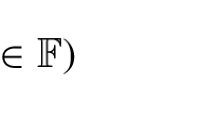Abstract
The immaculate basis of the Hopf algebra \(\textsf {NSym}\) of noncommutative symmetric functions is a Schur-like basis of \(\textsf {NSym}\) that has been applied in many areas in the field of algebraic combinatorics. The problem of determining a cancellation-free formula for the antipode of \(\textsf {NSym}\) evaluated at an arbitrary immaculate function \( {\mathfrak {S}}_{\alpha } \) remains open, letting \(\alpha \) denote an integer composition. However, for the cases whereby we let \(\alpha \) be a hook or consist of at most two rows, Benedetti and Sagan (J Combin Theory Ser A 148:275–315, 2017) have determined cancellation-free formulas for expanding \(S({\mathfrak {S}}_{\alpha })\) in the \({\mathfrak {S}}\)-basis. According to a Jacobi–Trudi-like formula for expanding immaculate functions in the ribbon basis that we had previously proved bijectively (Discrete Math 340(7):1716–1726, 2017), by applying the antipode S of \(\textsf {NSym}\) to both sides of this formula, we obtain a cancellation-free formula for expressing \(S({\mathfrak {S}}_{(m^{n})})\) in the R-basis, for an arbitrary rectangle \((m^{n})\). We explore the idea of using this R-expansion, together with sign-reversing involutions, to determine combinatorial interpretations of the \({\mathfrak {S}}\)-coefficients of antipodes of rectangular immaculate functions. We then determine cancellation-free formulas for antipodes of immaculate functions much more generally, using a Jacobi–Trudi-like formula recently introduced by Allen and Mason that generalizes Campbell’s formulas for expanding \({\mathfrak {S}}\)-elements into the R-basis, and we further explore how new families of composition tableaux may be used to obtain combinatorial interpretations for expanding \(S({\mathfrak {S}}_{\alpha })\) into the \({\mathfrak {S}}\)-basis.

Similar content being viewed by others
Data availability
There are no further data available corresponding to this research article.
References
M. Aguiar and F. Ardila, Hopf monoids and generalized permutahedra, preprint arXiv:1709.07504, 2017.
E. E. Allen, J. Hallam, and S. K. Mason, Dual immaculate quasisymmetric functions expand positively into Young quasisymmetric Schur functions, J. Comb. Theory Ser. A., 157 (2018), 70–108.
E. E. Allen and S. K. Mason, A combinatorial interpretation of the noncommutative inverse Kostka matrix, preprint arXiv:2207.05903, 2022.
F. Aliniaeifard, S. X Li, and S. van Willigenburg, Schur functions in noncommuting variables, Adv. Math., 406 (2022), 108536.
C. Benedetti and B. E. Sagan, Antipodes and involutions, J. Combin. Theory Ser. A 148 (2017), 275–315.
C. Berg, N. Bergeron, F. Saliola, L. Serrano, and M. Zabrocki, A lift of the Schur and Hall-Littlewood bases to non-commutative symmetric functions, Canad. J. Math. 66 (2014), no. 3, 525–565.
C. Bessenrodt, K. Luoto, and S. van Willigenburg, Skew quasisymmetric Schur functions and noncommutative Schur functions, Adv. Math. 226 (2011), no. 5, 4492–4532.
D. Callan, On conjugates for set partitions and integer compositions, preprint arXiv:0508052, 2005.
J. M. Campbell, Bipieri tableaux, Australas. J. Combin. 66 (2016), 66–103.
J. M. Campbell, The expansion of immaculate functions in the ribbon basis, Discrete Math. 340 (2017), no. 7, 1716–1726.
J. Campbell, K. Feldman, J. Light, P. Shuldiner, and Y. Xu, A Schur-like basis of \({\sf NSym}\) defined by a Pieri rule, Electron. J. Combin. 21 (2014), no. 3, Paper 3.41, 19.
I. M. Gelfand, D. Krob, A. Lascoux, B. Leclerc, V. S. Retakh, and J.-Y. Thibon, Noncommutative symmetric functions, Adv. Math. 112 (1995), no. 2, 218–348.
D. Grinberg, Double posets and the antipode of QSym, Electron. J. Combin., 24 (2017), no. 2, Paper No. 2.22, 47.
D. Grinberg and V. Reiner, Hopf Algebras in Combinatorics, preprint arXiv:1409.8356, 2020.
S. Mason , Lifting the dual immaculate functions, J. Combin. Theory Ser. A 184 (2021), Paper No. 105511, 52.
B. E. Sagan, Shifted tableaux, Schur Q-functions and a conjecture of R. Stanley, J. Combin. Theory Ser. A 45 (1987), no. 1, 62–103.
D. Searles, Extended Schur functions and 0-Hecke modules, Sém. Lothar. Combin. 84B (2020), Art. 37, 11.
D. Searles, Indecomposable \(0\)-Hecke modules for extended Schur functions, Proc. Amer. Math. Soc. 148 (2020), no. 5, 1933–1943.
Acknowledgements
The author hereby express his sincere, thanks to a number of anonymous Referees who provided very useful feedback on this article.
Author information
Authors and Affiliations
Corresponding author
Ethics declarations
Conflict of interest
There are no potential conflicts of interest to declare.
Additional information
Communicated by Nathan Williams.
Publisher's Note
Springer Nature remains neutral with regard to jurisdictional claims in published maps and institutional affiliations.
Rights and permissions
Springer Nature or its licensor (e.g. a society or other partner) holds exclusive rights to this article under a publishing agreement with the author(s) or other rightsholder(s); author self-archiving of the accepted manuscript version of this article is solely governed by the terms of such publishing agreement and applicable law.
About this article
Cite this article
Campbell, J.M. On Antipodes of Immaculate Functions. Ann. Comb. 27, 579–598 (2023). https://doi.org/10.1007/s00026-022-00632-0
Received:
Accepted:
Published:
Issue Date:
DOI: https://doi.org/10.1007/s00026-022-00632-0



